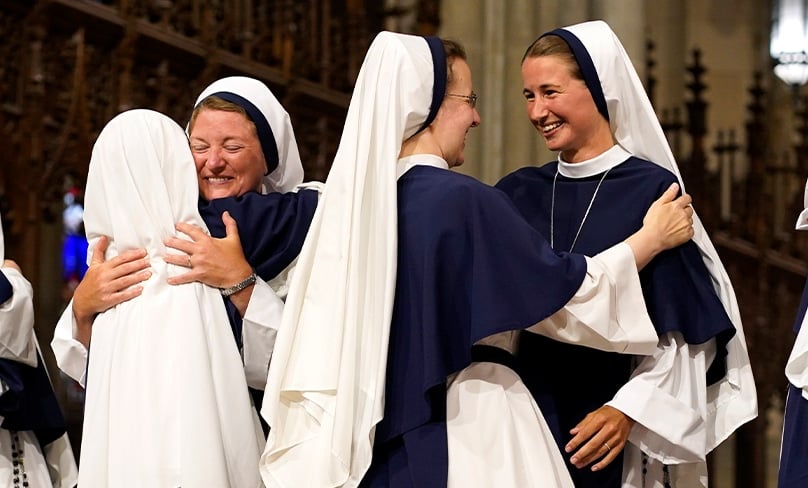
Dear Fr John Flader, I have a friend who is becoming a consecrated virgin and she tells me that this form of life goes back to the early church, when there was an Order of Virgins. Can you tell me something about this way of life?
By way of background, for Jewish women at the time of Christ, a life of virginity was not esteemed and was rarely practised, since Jewish women hoped to be numbered among the ancestors of the Messiah through their offspring. But in the early Church, already in the first centuries, women were living virginity and dedicating themselves to Christ as his brides.
A Vatican Instruction on the Order of Virgins, Ecclesiae sponsae imago (2018), says: “Since apostolic times this expression of the mystery of the church has been demonstrated in a unique way in the lives of those women who with spousal love are dedicated to the Lord Jesus in virginity.”
“Responding to a charism kindled in them by the Holy Spirit, they experience the spiritual fertility of an intimate relationship with him and offer the fruits of this relationship to the church and to the world” (n. 1).
The instruction goes on to say that some passages in the New Testament and other Christian writings of the first centuries show that this form of life appeared spontaneously in the context of the pagan society of the time, showing the novelty of Christianity.
“In a process similar to that which concerned the status of widows who chose continence ‘in honour of the flesh of the Lord’, consecrated female virginity gradually assumed the characteristics of a state of life publicly recognised by the church” (n. 2).
What is more, in the first three centuries large numbers of these consecrated virgins underwent martyrdom in order to remain faithful to Christ, among them Saints Agatha, Lucy, Agnes and Cecilia.
The fathers of the church saw in this way of life a reflection of the image of the church as the bride totally dedicated to her bridegroom. They referred to these women as “brides of Christ”, “dedicated to Christ” and “married to Christ.” With time, consecrated virgins came to comprise an official group identified by the name of the order of virgins.
From the fourth century, entry into the order took place through a solemn liturgical rite presided over by the diocesan bishop. In a Mass with the community, the woman expressed her resolution to remain in virginity for her whole life, for the love of Christ.
The bishop then pronounced the prayer of consecration of the virgin. As seen in the writings of St Ambrose and other liturgical sources, the nuptial symbolism of the rite was manifested especially by the bishop placing a veil on the virgin’s head, as was done during the celebration of marriage.
The Church Fathers, in addition to criticising the behaviour of consecrated virgins who did not live up to their commitment of chastity, also challenged the arguments of those who denied the value of consecrated virginity or who supported the ideal of virginity only on the basis of a negative conception of matrimony and sexuality.
They emphasised the ecclesial and social significance of virginity, with the Virgin Mary as exemplar, and the prophetic value of anticipating the full communion with Christ that will come with his return at the end of time.
The fathers exhorted consecrated virgins to nourish their love for Christ the Bridegroom through meditation on the Scriptures, in personal and liturgical prayer, by practising asceticism, the virtues and the works of mercy; by cultivating an attitude of obedience to the teaching of the bishop and the obligation to safeguard ecclesial communion.
Thus, virgins would offer a transparent and persuasive witness to the Gospel within the Christian community in which they lived. They usually lived with their family of origin or at times in community.
Later, with the rise of monasticism, when religious lived in community with a common rule and obedience to a superior, the Order of Virgins, with its characteristic foundations in the local ecclesial community under the diocesan bishop, gradually disappeared.
It was restored after the Second Vatican Council and is now lived with renewed vigour. Entry into the order is done through the Rite of Consecration to a Life of Virginity for Women Living in the World, presided over by the diocesan bishop. Each virgin follows her own rule of life, approved by the bishop.
